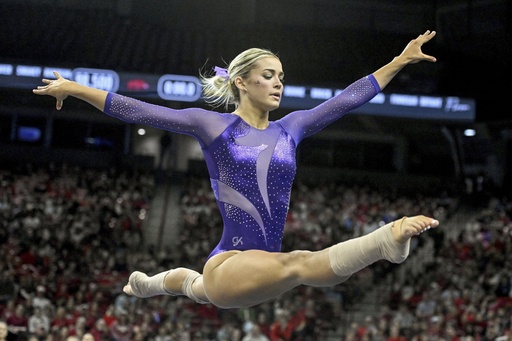
At least 18 objections have been lodged against the proposed $2.8 billion settlement regarding antitrust claims against the NCAA and major athletic conferences. Concerns range from restrictions on team rosters and compliance with Title IX to accusations of imposing an unjust salary cap. However, legal representatives involved in the case believe that these objections will not impede the progress of this transformative lawsuit, which is anticipated to move forward this year.
The deadline to submit objections to the so-called House settlement was Friday. This settlement seeks to compensate former athletes with millions in back pay while also allowing schools to distribute up to $20.5 million annually in payments to athletes for the use of their name, image, and likeness (NIL). U.S. District Judge Claudia Wilken will evaluate the objections ahead of the scheduled hearing on April 7, which is set to finalize the settlement approval. Educational institutions aim for the settlement to be effective from the upcoming academic year.
Rakesh Kilaru, the lead counsel representing the NCAA in this case, expressed confidence, stating, “We don’t believe there’s anything in the objections that hasn’t already been discussed, nor any new points raised during the preliminary approval process.” Kilaru emphasized that he does not foresee any objections that would compel the judge to alter her initial stance on the settlement.
Objections have ranged widely, from personal letters submitted by individual athletes to legal documents that critique the entire settlement. Notably, LSU gymnast Livvy Dunne filed a seven-point objection citing a lack of athlete involvement in shaping the agreement. Additionally, a group of 67 athletes, including former Mississippi State running back Kylin Hill, who opted out of the class-action lawsuit, have initiated their own antitrust lawsuit against both the NCAA and the conferences involved.
Plaintiff attorney Jeffrey Kessler highlighted the significant number of over 40,000 athletes who have submitted claims as a testament to the robustness of the settlement. The lawsuit’s defendants comprise the NCAA and its associated conferences, including the Big Ten, Southeastern, Big 12, Atlantic Coast, and Pac-12.
A central issue pertains to the proposed salary cap. In the waning days of the Biden administration, the Justice Department sided with athletes and legal advocates in arguing that the established $20.5 million fund—amounting to 22% of television and other revenues at top-tier schools—constitutes an undue salary cap. Some legal documents labeled this cap as “totally arbitrary,” claiming it contradicts the antitrust principles the settlement aims to uphold.
Conversely, attorneys who facilitated the settlement maintain that athletes who have chosen to opt out of the class-action will still have opportunities to seek damages independently, and that third-party NIL payments will not count against the designated $20.5 million limit. Kilaru questioned the feasibility of alternatives to the settlement, asking, “What’s your better solution to this?” He underscored that the final terms reached represent a fair resolution to ongoing antitrust claims, promoting stability for the future.
Another consideration is how this new NIL compensation structure aligns with Title IX regulations. Title IX governs gender equity in education, which has far-reaching implications in the realm of athletics. Recent guidance from the Education Department warned that NIL payments could be regarded as educational benefits, potentially placing schools at odds with Title IX if they predominantly compensate male athletes.
Although this issue presents challenges, Kessler believes it will not hinder the settlement’s approval. He noted, “This is an antitrust case, not a Title IX case. The settlement cannot address Title IX issues, as schools will still need to comply with those requirements.”
Furthermore, roster limits have come into play, with many athletes already losing their spots as athletic departments prepare for the anticipated settlement. The NCAA claims that new rules establishing roster sizes while removing scholarship limits ultimately benefit student-athletes, despite the adverse impact on walk-on players.
Regarding the objections about roster sizes, Kessler asserts that these issues should not preclude Judge Wilken from approving the settlement, as roster limits are set by the NCAA and not the plaintiffs. “This should be viewed more as a tension between those affected by roster limits and the NCAA,” he explained.
Concerns have also been raised regarding the distribution of the $2.8 billion meant for former athletes who competed before NIL regulations took effect in July 2021. The apportionment method is based on assessing each athlete’s market value, leading to dissatisfaction among walk-on football players excluded from receiving payments and athletes in lesser-known sports facing minimal compensation.
According to Gabe Feldman, the director of the Tulane Sports Law program closely following the settlement developments, it’s common for not every participant in a large class-action lawsuit to be satisfied. “There’s no way to achieve a perfect agreement,” he said, adding that this case should be viewed strictly as antitrust litigation that is likely to receive approval on April 7. Feldman concluded that the settlement does not attempt to reinvent college athletics but acknowledges that the NCAA and conferences will need to address remaining gaps moving forward.

